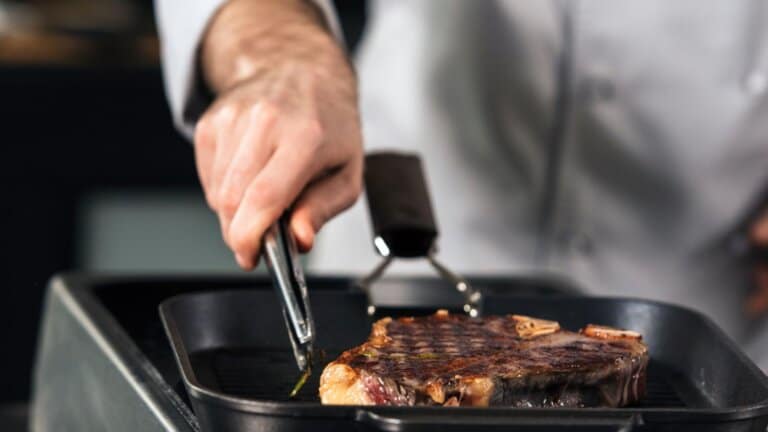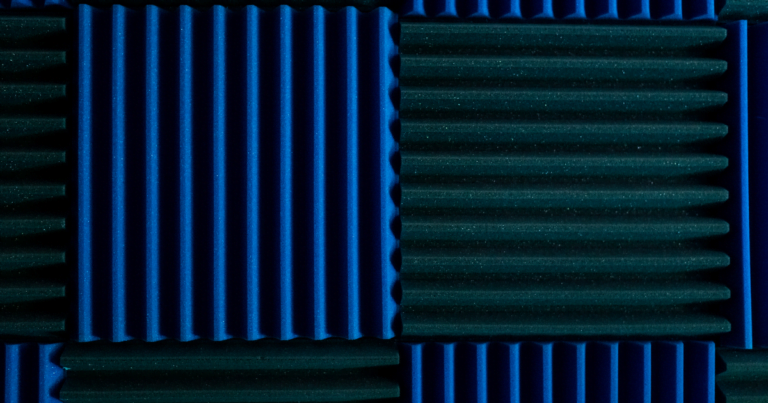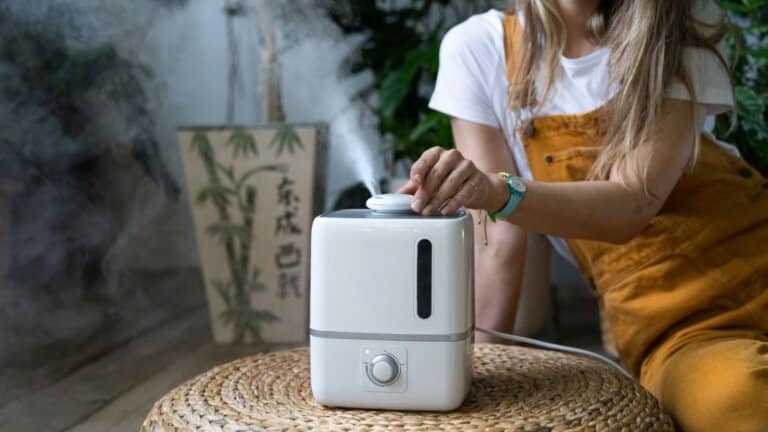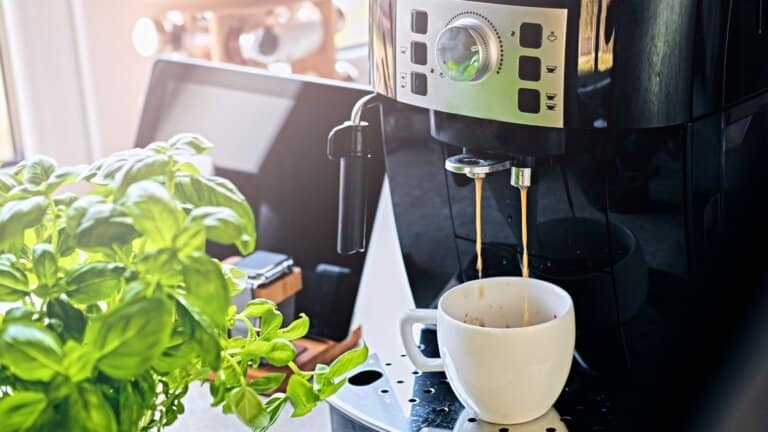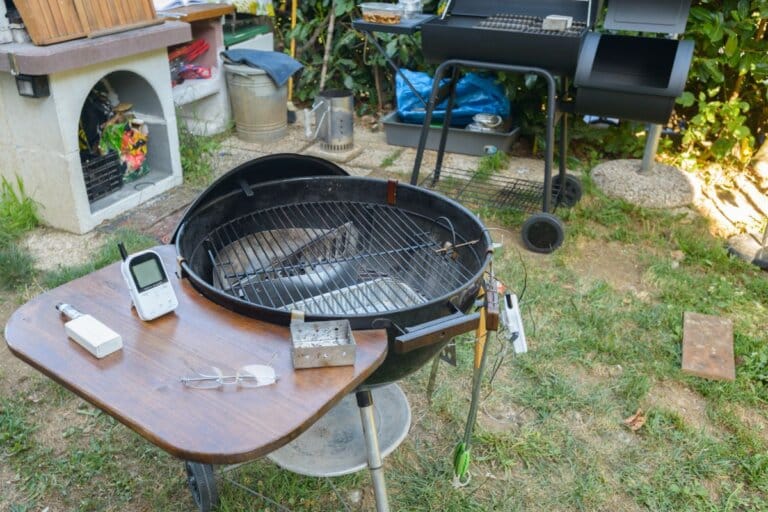How to Clean Wood Furniture to Make It Look New Again
Wood furniture isn’t just functional; it’s a work of art. Proper care ensures that your pieces remain beautiful and durable for years. Neglecting maintenance can lead to costly repairs or even replacements.
Benefits of Cleaning Wood Furniture
Regular cleaning does more than making your furniture look good. It helps protect the wood from damage, keeps it free from allergens, and enhances its natural oils. Clean furniture also contributes to a healthier living environment, reducing dust and allergens that can negatively impact your health.
According to Market Data Forecast the Global Carpet and Upholstery Cleaning Services Market Size (2024 to 2029), The global carpet and upholstery cleaning services market is estimated to grow from USD 62358 million in 2024 to USD 82275 million by 2029, growing at a CAGR of 5.7% from 2024 to 2029.
Types of Wood Finish
- Varnished: A durable, glossy finish that’s relatively easy to clean.
- Painted: Offers a splash of color but needs gentle cleaning to avoid chipping.
- Lacquered: Provides a shiny, hard finish that’s resistant to moisture.
- Oiled: Enhances the wood’s natural grain but requires frequent re-oiling.
- Unfinished: Raw wood that’s vulnerable to stains and requires careful handling.
Identifying the Finish on Your Furniture
Before you grab a cleaning cloth, you must know what type of finish you’re dealing with. A simple test using a few drops of water can help. If the water beads up, it’s likely varnished or lacquered.
If it soaks in, you’re probably dealing with unfinished or oiled wood. Knowing the finish helps you choose the correct cleaning method and avoid potential damage.
General Cleaning Tips for Wood Furniture
Essential Cleaning Supplies
Stock up on these must-have cleaning supplies:
- Microfiber cloths for gentle dusting
- Soft brushes to get into crevices
- Mild soap and water for basic cleaning
- White vinegar for tackling tougher grime
- Mineral spirits for deep cleaning varnished surfaces
- Furniture polish to restore shine
Basic Cleaning Steps
- Dust Regularly: Use a microfiber cloth to remove dust particles.
- Avoid Harsh Chemicals: Stick to mild soap and water to prevent damage.
- Use Soft, Lint-Free Cloths: They’re gentle on the wood surface and effective in cleaning.
Detailed Cleaning Methods for Different Types of Finishes
Cleaning Varnished Wood Furniture
Tools and Materials Needed
Gather a microfiber cloth, mild soap, water, and furniture polish.
Step-by-Step Cleaning Process
- Dust the surface with a dry microfiber cloth.
- Mix mild soap with water and dampen the fabric.
- Wipe down the furniture gently, then dry with a clean cloth.
- Apply furniture polish to enhance the finish.
Cleaning Painted Wood Furniture
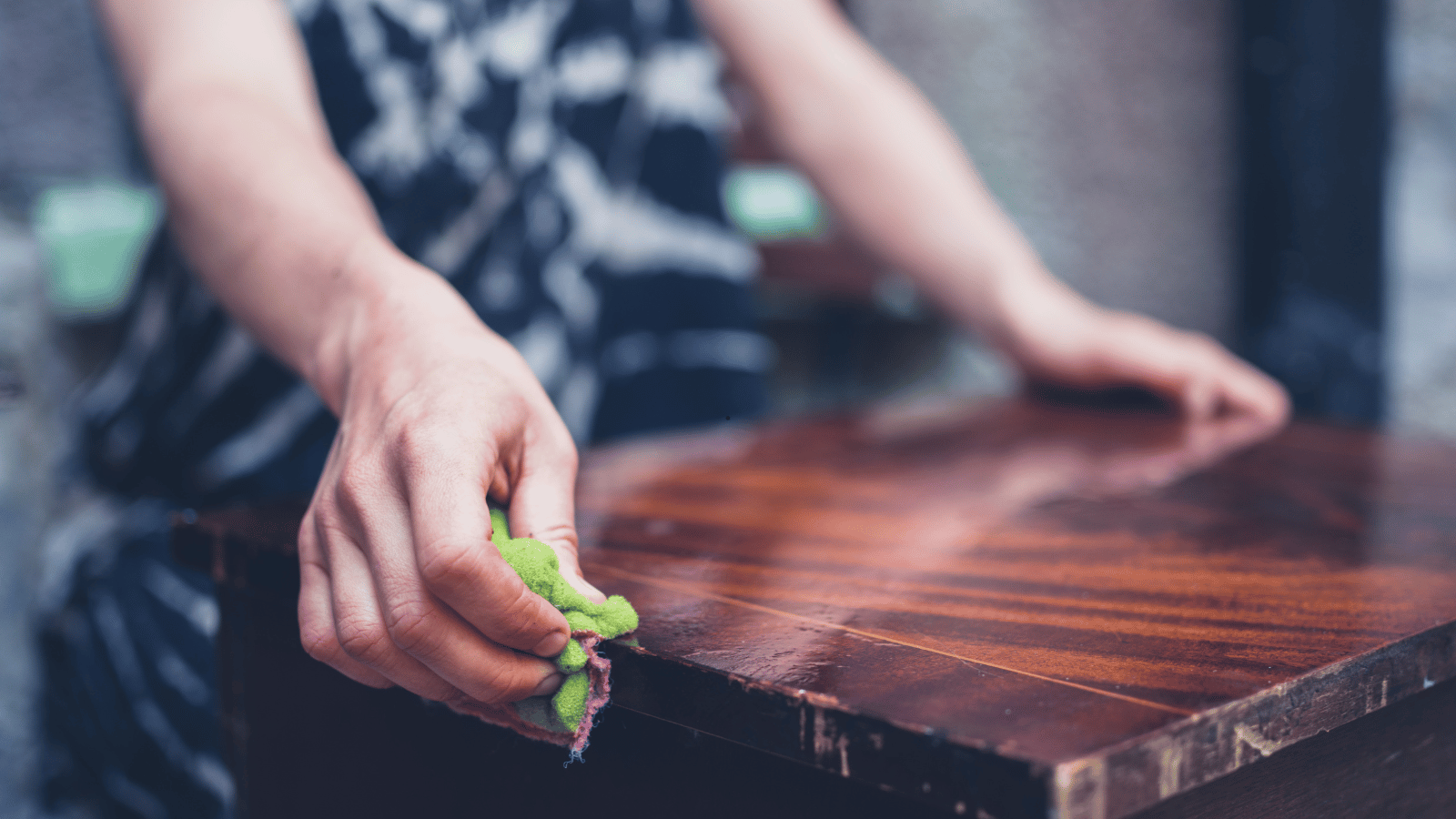
Tools and Materials Needed
You’ll need a soft cloth, mild soap, and water.
Step-by-Step Cleaning Process
- Dust the surface with a dry cloth.
- Mix mild soap with water and dampen the fabric.
- Wipe gently to avoid chipping the paint.
- Dry with a clean cloth.
Cleaning Lacquered Wood Furniture
Tools and Materials Needed
Use a microfiber cloth, mild soap, and water.
Step-by-Step Cleaning Process
- Dust with a dry microfiber cloth.
- Mix mild soap with water and dampen the fabric.
- Wipe down the lacquered surface gently.
- Dry immediately with a clean cloth.
Cleaning Oiled Wood Furniture
Tools and Materials Needed
Prepare a soft cloth, mild soap, water, and oil.
Step-by-Step Cleaning Process
- Dust the surface with a dry cloth.
- Mix mild soap with water and dampen the fabric.
- Wipe gently, then dry with a clean cloth.
- Reapply oil to maintain the finish.
Cleaning Unfinished Wood Furniture
Tools and Materials Needed
You’ll need a soft brush, mild soap, and water.
Step-by-Step Cleaning Process
- Brush away dust with a soft brush.
- Mix mild soap with water and dampen the cloth.
- Wipe carefully, then dry immediately to prevent water stains.
Dealing with Common Wood Furniture Problems
Removing Water Stains
Causes and Prevention
Water stains occur when moisture penetrates the finish. Prevent them by using coasters and placemats.
Methods for Removing Water Stains
- Use a hairdryer on low heat to evaporate the moisture.
- Apply a baking soda and water paste, then wipe clean.
- Rub mayonnaise into the stain, leave overnight, and wipe off.
Eliminating Scratches and Scuffs
Tools and Materials Needed
Grab a wood filler, sandpaper, and matching stain.
Techniques for Minor and Deep Scratches
- Minor Scratches: Rub a walnut over the scratch to blend it.
- Deep Scratches: Fill with wood filler, sand smooth, and re-stain.
Getting Rid of Sticky Residue
Causes of Sticky Residue
Residue often comes from spills, wax build-up, or cleaning products.
Cleaning Methods
- Wipe with vinegar diluted in water.
- Use mineral spirits for more challenging residue.
- Rinse with water and dry thoroughly.
Natural and Homemade Cleaning Solutions
Benefits of Natural Cleaners
- Eco-Friendly: Safe for the environment.
- Safe for Furniture and Users: Gentle on wood and non-toxic.
Homemade Cleaning Recipes
- Vinegar and Olive Oil Mixture: Great for cleaning and polishing.
- Lemon Juice and Olive Oil Polish: Adds shine and fresh scent.
- Baking Soda and Water Paste: Effective for tough stains.
Preventative Care for Wood Furniture
Regular Maintenance Tips
- Dust Regularly: Prevent build-up of dirt and grime.
- Use Coasters and Placemats: Protect against spills and stains.
- Avoid Direct Sunlight: Prevent fading and damage.
Proper Placement and Environmental Factors
- Humidity Control: Keep humidity levels balanced to prevent warping.
- Temperature Considerations: Avoid placing furniture near heat sources.
Restoring Wood Furniture to Its Former Glory
When to Consider Professional Help
Identifying Severe Damage
If you see deep scratches, warping, or broken parts, it’s time to call a professional.
Choosing a Professional Restoration Service
Look for reviews, ask for references, and check their portfolio.
DIY Restoration Projects
Refinishing Techniques
Sand the surface, apply a new finish, and seal it.
Re-staining and Re-sealing Wood Furniture
Strip the old stain, apply a new coat, and seal for protection.
Bottomline
Following these expert tips can keep your pieces looking new for years. Regular cleaning and proper care go a long way in preserving the beauty and value of your furniture. For those times when you need a bit more help, consider professional restoration services or take on a DIY project.



